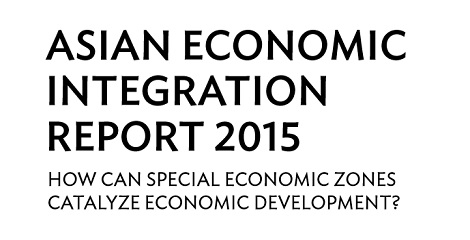Asian Development Bank (ADB) released a report titled “Asian Economic Integration Report 2015: How Can Special Economic Zones Catalyze Economic Development?”
- The Asian Economic Integration Report (AEIR) 2015 was prepared by the Regional Cooperation and Integration Division (ERCI) of ADB’s Economic Research and Regional Cooperation Department (ERCD).
- The report examined the current trends in trade, finance, migration, remittances and other economic activities in the region.
 Key Highlights of Report
Key Highlights of Report
- Asia has emerged as an important source of outward foreign direct investment (FDI). Its outward FDI increased faster than inward FDI growing 45.3% in 2014 compared with 2010.
- Asia’s income elasticity of trade declined from 2.69 before the global financial crisis (2008-09) to 1.30 in 2015.
- The value of Asia’s intermediate goods trade of almost 60% of total trade has contracted 2.6 % in 2014.
- Asia remains the world’s largest source of international migrants, accounting for a third of the global total in 2013 and the region also accounted for nearly 50% of global remittances in 2014.
- Special economic zones (SEZs) became a driving force for increased trade, investment and economic reform in Asia at a time the region is experiencing a slowdown in trade.
- The expansion in the number of SEZs from 500 in 1995 to over 4300 in 2015 shows the strong and rising interest to this form of policy experiment.
- In developing Asia, countries with SEZs attract significantly more FDI, corresponding to 82% greater FDI levels.
Report with respect to India
- India has become the 3rd largest source of inward FDI for the United Kingdom (UK) after the US and France in number of projects.
- Indian economy switched focus to higher technology products as compared with 1990 when it focused mainly on low-technology exports
- India’s labor productivity slowed in agriculture is mainly due to falling investment, diversion of productive agricultural land to nonfarm purposes, and climate change which reduced most farm yields.
AffairsCloud Recommends Oliveboard Mock Test
AffairsCloud Ebook - Support Us to Grow
Govt Jobs by Category
Bank Jobs Notification




